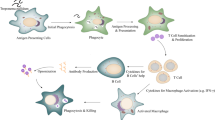Abstract
Visceral leishmaniasis (VL) is a major vector-borne disease caused by Leishmania donovani, after replication of the parasites in macrophages, mononuclear phagocytic system. VL is endemic in 12 districts of central and eastern Terai lowlands of Nepal bordering North Bihar, India with an estimated 8 million population at risk. In addition, VL endemicity is also extending to new endemic regions like Dharan from its classical rural foci. Hence, we aimed to detect the evidence of Leishmania donovani infection in the blood samples received from blood donors of Sunsari district, Dharan, (eastern Nepal), a region endemic for human VL. Sera from 507 asymptomatic blood donors were subjected to serological screening for anti-Leishmania donovani antibodies. Direct agglutination test (DAT) was performed on the sera. Out of 507 donors, majority (78.50 %) were male. Among the donors, 472 (93.10 %) belonged to age group 18–45 years where as 35 (6.90 %) to age group >45 years. Circulating anti-Leishmania antibodies were detected in 5 (1 %) out of 507 healthy, Human Immunodeficiency Virus types 1 and 2 (HIV 1and 2), Hepatitis B Surface Antigen (HBsAg), anti- Hepatitis C Virus (anti-HCV)-negative, and Syphillis non-reactive donors. All the seropositive cases were male and belonged to the age group 18–45 years. The result suggests that there is an immediate need of screening asymptomatic blood donors for leishmania seropositivity especially in endemic areas.
Similar content being viewed by others
References
Pearson RD, Sousa AQ (1995) Clinical spectrum of leishmaniasis. Clin Infect Dis 22:1–13
Sundar S (2001) Drug resistance in Indian visceral leishmaniasis. Trop Med Int Health 6:849–854
Bista MB (1998) National overview of kala-azar in Nepal. In: Bastola S, Karki P, Rijal S, Gautam A (eds) Kala-azar in Nepal: principals, practice and public health perspectives. EDCD/BPKIHS/WHO, Kathmandu, pp 1–5
Rijal S, Uranw S, Chappuis F et al (2010) Epidemiology of Leishmania donovani infection in high-transmission foci in Nepal. Trop Med and Int Health 15(2):21–28
Chappuis F, Sundar S, Hailu A et al (2007) Visceral leishmaniasis: what are the needs for diagnosis, treatment and control? Nat Rev Microbiol 5:873–882
Xavier B (2003) USA blocks blood donation in bid to prevent leishmaniasis. Lanc Infect Dis 3:746
Meredith SE, Kroon NC, Sondorp E et al (1995) Leish-KIT, a stable direct agglutination test based on freeze-dried antigen for serodiagnosis of visceral leishmaniasis. J Clin Microbiol 33:1742–1745
Boelaert M, Rijal S, Regmi S et al (2004) A comparative study of the effectiveness of diagnostic tests for visceral leishmaniasis. Am J Trop Med Hyg 70:72–77
Zijlstra EE, El-Hassan AM, Ismael A et al (1994) Endemic kala-azar in eastern Sudan: a longitudinal study on the incidence of clinical and subclinical infection and post-kala-azar dermal leishmaniasis. Am J Trop Med Hyg 51:826–836
Stauch A, Sarkar RR, Picado A et al (2011) Visceral leishmaniasis in the Indian subcontinent: modelling epidemiology and control. PLoS Negl Trop Dis 5:e1405. doi:10.1371/journal.pntd.0001405
Hasker E, Malaviya P, Gidwani K et al (2014) Strong association between serological status and probability of progression to clinical visceral leishmaniasis in prospective cohort studies in India and Nepal. PLoS Negl Trop Dis 5:e1405. doi:10.1371/journal.pntd.0002657
Scarlata F, Vitale F, Saporito L, Reale S et al (2008) Asymptomatic Leishmania infantum/chagasi infection in blood donors of western Sicily. Trans R Soc Trop Med Hyg 102:394–396
Fakhar M, Motazedia MH, Hatam GR et al (2008) Asymptomatic human carriers of Leishmania infantum: possible reservoirs for Mediterranean visceral leishmaniasis in southern Iran. Ann Trop Med Parasitol 102:577–583
Riera C, Fisa R, Udina M et al (2004) Detection of Leishmania infantum cryptic infection in asymptomatic blood donors living in an endemic area (Eivissa, Balearic Islands, Spain) by different diagnostic methods. Trans R Soc Trop Med Hyg 98:102–110
Le Fichoux Y, Quaranta JF, Aufeuvre JP et al (1999) Ocurrence of Leishmania infantum parasitemia in asymptomatic blood donors living in an area of endemicity in Southern France. J Clin Microbiol 37:1953–1957
Luz KG, da Silva VD, Gomes EM et al (1997) Prevalence of anti-leishmania donovani antibody among brazilian blood donors and multiply transfused hemodialysis patients. Am J Trop Med Hyg 57(2):168–171
Riera C, Fisa R, López-Chejade P et al (2008) Asymptomatic infection by Leishmania infantum in blood donors from the Balearic Islands (Spain). Transfus 48:1383–1398
Bern C, Hightower AW, Chowdhury R (2005) Risk factors for kala azar in Bangladesh. Emerg Infect Dis 11:655–662
Guevara P, Rojas L, Gonzales N (1994) Presence of Leishmania braziliensis in blood samples from cured patients or at different stages of immunotherapy. Clin Diagn Lab Immun 1:385–389
Sharma MC, Gupta AK, Das VN (2000) Leishmania donovani in blood smears of symptomatic persons. Acta Trop 76:195–196
Chung HL, Chow HK, Lu JP (1948) The first two cases of transfusion kala-azar. Chin Med J 66:325–326
Singh S, Chaudhry VP, Wali JP (1996) Transfusion-transmitted kala-azar in India. Transfus 36:848–849
Mathur P, Samantaray JC (2004) The first probable case of platelet transfusion- transmitted visceral leishmaniasis. Transfus Med 14:319–321
Wright M (1959) Kala-azar of unusual duration, associated with agammaglobulinemia. Br Med J 1:1218–1221
Antinori S, Cascio A, Parravicini C et al (2008) Leishmaniasis among organ transplant recipients. Lancet Infect Dis 8:191–199
Dey A, Singh S (2006) Transfusion transmitted leishmaniasis: a case report and review of the literature. Indian J Med Microbiol 24:165–170
Kyriakou DS, Alexandrakis MG, Passam FH et al (2003) Quick detection of Leishmania in peripheral blood by flow cytometry. Is prestorage leucodepletion necessary for leishmaniasis prevention in endemic areas? Transfus Med 13(2):59–62
Acknowledgments
We are sincerely thankful to the technical staffs of Department of Microbiology, BPKIHS, Dharan, in helping us to conduct this work. In addition, we are grateful to the staffs of Blood Bank, Dharan for their continuous help and support.
Author information
Authors and Affiliations
Corresponding author
Rights and permissions
About this article
Cite this article
Timilsina, S., Raj Bhattarai, N., Khanal, B. et al. Serological Assessment for Leishmania donovani Infection in Blood Donors of Sunsari District, Dharan, Nepal. Indian J Hematol Blood Transfus 32, 95–99 (2016). https://doi.org/10.1007/s12288-015-0505-6
Received:
Accepted:
Published:
Issue Date:
DOI: https://doi.org/10.1007/s12288-015-0505-6




